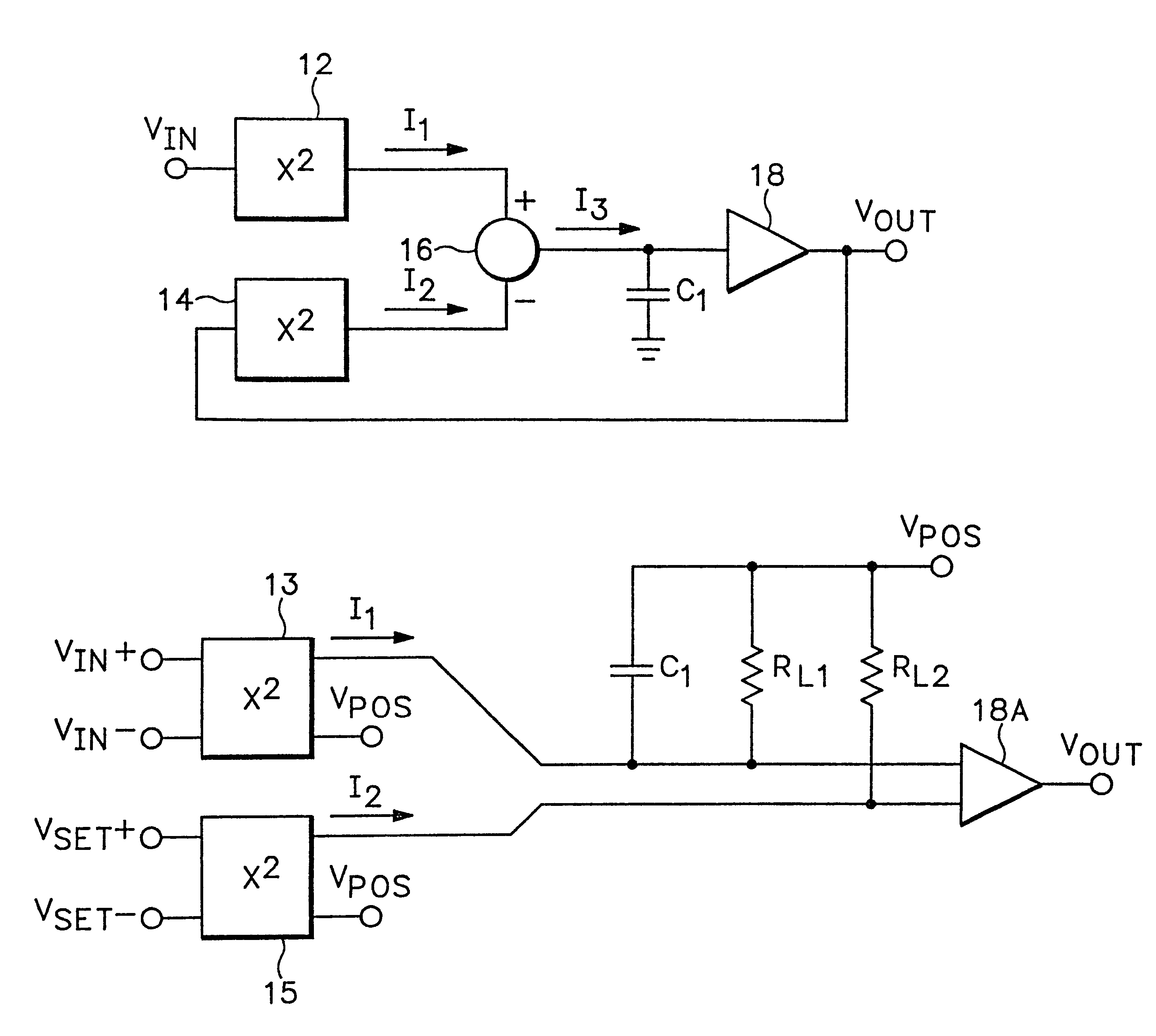RMS-to-DC converter with balanced multi-tanh triplet squaring cells
a triplet squaring cell, balanced technology, applied in the field of rmstodc converters, can solve the problems of not being able to detect true rms detectors, not operating well at microwave frequencies, and reducing the sensitive to low signal levels
- Summary
- Abstract
- Description
- Claims
- Application Information
AI Technical Summary
Benefits of technology
Problems solved by technology
Method used
Image
Examples
Embodiment Construction
FIGS. 10-13 together form a schematic diagram of a preferred embodiment of an RMS-to-DC converter in accordance with the present invention. This embodiment is intended for implementation as a monolithic integrated circuit.
Referring to FIG. 10, the HF squaring cell 13 and current source transistors Q9-Q12 are arranged in essentially the same configuration as in FIG. 6, but the cascode transistor Q7 is eliminated, and instead, the common emitter node E1 is connected directly to the collectors of Q9 and Q12. The collectors of Q10 and Q11 are connected together at node E2. An RC filter includes a capacitor C4 connected between a node EMHF and GND and a resistor R7 connected between the nodes E1 and EMHF.
Referring to FIG. 11, the DC squaring cell 15 has the same structure as in FIG. 6, but cascode transistor Q8 is eliminated, and the common emitter node E2 is connected directly to the collectors of Q10 and Q11 in FIG. 10. A balancing circuit, which is essentially an operational amplifier...
PUM
 Login to View More
Login to View More Abstract
Description
Claims
Application Information
 Login to View More
Login to View More - R&D
- Intellectual Property
- Life Sciences
- Materials
- Tech Scout
- Unparalleled Data Quality
- Higher Quality Content
- 60% Fewer Hallucinations
Browse by: Latest US Patents, China's latest patents, Technical Efficacy Thesaurus, Application Domain, Technology Topic, Popular Technical Reports.
© 2025 PatSnap. All rights reserved.Legal|Privacy policy|Modern Slavery Act Transparency Statement|Sitemap|About US| Contact US: help@patsnap.com



